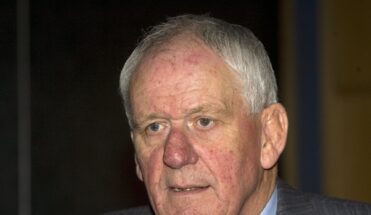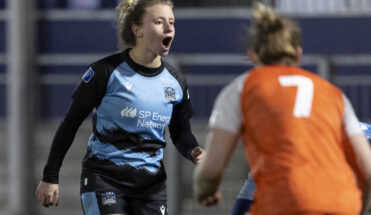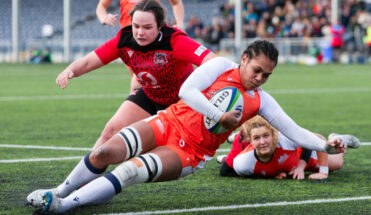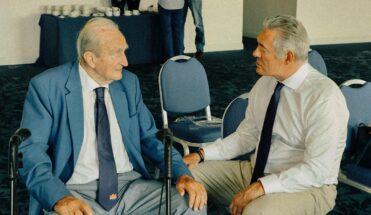IN FOCUS: The birthplace of international rugby
When the 150th anniversary of the first international rugby match is celebrated in little over a year’s time, we should not underestimate the significance of the occasion.
The fact that the game was played between Scotland and England at Raeburn Place is of course well known, but like the castle on the rock just a mile up the hill, it is easy to take for granted. That ambitious challenge match in 1871, held in the leafy Stockbridge district of Edinburgh before 4,000 spectators, gave rise to a global spectacular, commanding television audiences of up to 60 million at this year’s Rugby World Cup in Japan. It is an extraordinary legacy.
It could barely be more fitting that a heritage project is well underway to include a museum as part of the Raeburn Place Foundation development, established to upgrade the outdated facilities at the historic location and “ensure it continues to flourish and prosper as a centre for rugby and sport in general” with direct benefit for the local community. The museum is intended to preserve, promote and celebrate the area’s sporting heritage, as well as creating a tourist attraction.
For those who would point out that there is already a vast collection of exhibits and archive material held and displayed by Scottish Rugby at the national stadium, it is important to make a distinction. BT Murrayfield is the home of the history of Scottish rugby, but Raeburn Place will host a museum of the international game.
At a cost of £4.75 million, the Museum of International Rugby will not come cheap, but the expense comes in creating the quality of experience that the Foundation wants to offer to what will be an estimated 60,000 visitors annually, based on proposed opening of five days a week. Four galleries will tell the story of international rugby through a combination of exhibits and audio-visual displays, created by Studio MB, the Edinburgh-based design agency which has worked on projects such as the D-Day Story in Portsmouth and the King Richard III Visitor Centre in Leicester.
The first gallery will tell the story of how the first international match came about, the second will focus on how the laws of the game were standardised and the question of who should govern the game, the third will feature 15 game-changing events and people who shaped rugby from its inception, and the fourth will highlight rugby as a spectator sport, spotlighting the rugby fans themselves – their passion and sense of belonging, and the anthems, media and memorabilia which characterise the sport today.
Located in a two-storey, glass-fronted building in the site between the grandstand currently emerging on Comely Bank Road and the Raeburn Hotel, the museum will be on the ground floor, with a cafe/bar above. The building will incorporate a multi-use learning space, as well as a library and, in line with its sporting heritage objective, will provide a home for the Rugby Memories Scotland HQ and a local Rugby Memories group.
The building itself will cost £2.75 million, and the fit-out £2 million. It is a tall order, but the Foundation is in initial discussions with potential funders, and is keen to raise awareness of what the museum will offer for both rugby enthusiasts and for the wider community beyond the game itself.
“We are looking to charitable trusts and foundations,” says Alastair Graham, fundraising co-ordinator and founding patron of the Raeburn Place Foundation. “We can also offer corporate sponsorship opportunities, including naming rights and the chance to hold events in what will be a unique space, in a city centre location. What we will have here is something very different.
“Realistically we are hoping to have the funding in place by the middle of next year. We could have the building up by 2021 although it might not be open by that time.”
He adds: “We are very positive about visitor numbers, but it is not going to swamp Raeburn Place. We will operate a booking system, particularly on rugby weekends.”
It is easy to envisage Raeburn Place becoming a pilgrimage for rugby supporters who visit Edinburgh. The ground is steeped in history: as well as the birthplace of international rugby, it also holds significance as the home of Scotland’s oldest rugby club the Edinburgh Academical Football Club, the venue of the first club rugby match in Scotland, the first Calcutta Cup match in 1879, Scotland Women’s first international in 1993, the Women’s Rugby World Cup final in 1994 and the Under-21 World Cup in 2004.
“The museum will provide an explicit link back to the past, inspiring Scots and providing people worldwide with an enhanced appreciation of what a central role Scotland has played in the development of rugby,” says rugby journalist and Museum Board member Richard Bath.
The project has the backing of Scottish Rugby, World Rugby, VisitScotland and City of Edinburgh Council. Its vision is clear, and positive. If the Foundation can now succeed with its fund-raising, the museum will tell a story that Stockbridge and Scotland should be proud of, and one that deserves to be shared with the rest of the world.
Donald Walker offers a guest perspective as a former Sports Editor and then Deputy Editor of The Scotsman from 1998 to 2019 and is writing a series on rugby.
Tags
Related news

Obituary: Ken Scobie

Darge and Russell named co-captains | Squad update

Arnold Clark Men’s Premiership feature match: Musselburgh v Edinburgh Accies

Scotland squad announced for 2025 Guinness Six Nations

Obituary: Peter Brown

Celtic Challenge 2024/25: Round 4 Review

Three of the best young players in Scotland bound for South Africa

Celtic Challenge 2024/25: Round 3 Review

Obituary: John Douglas





